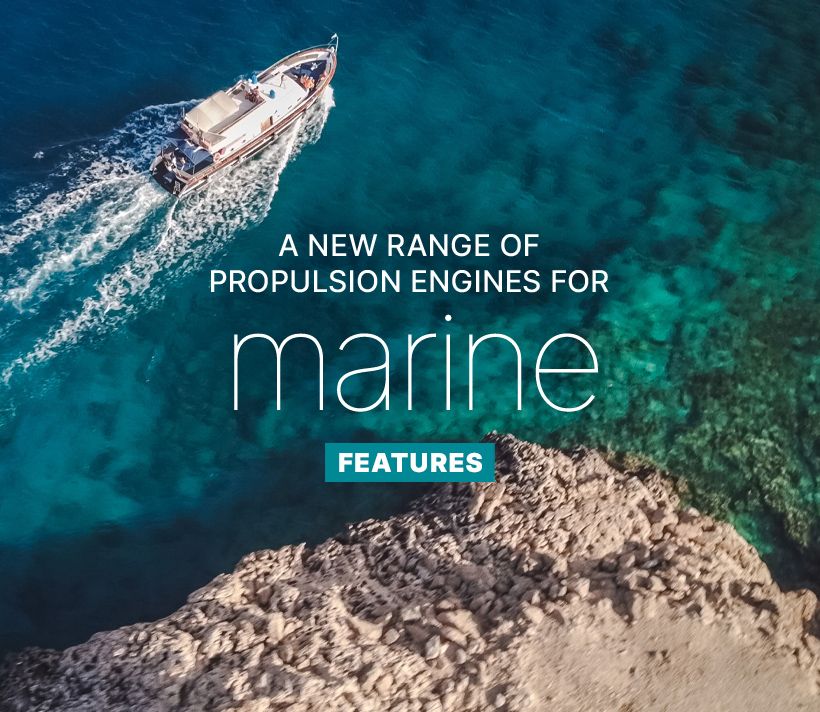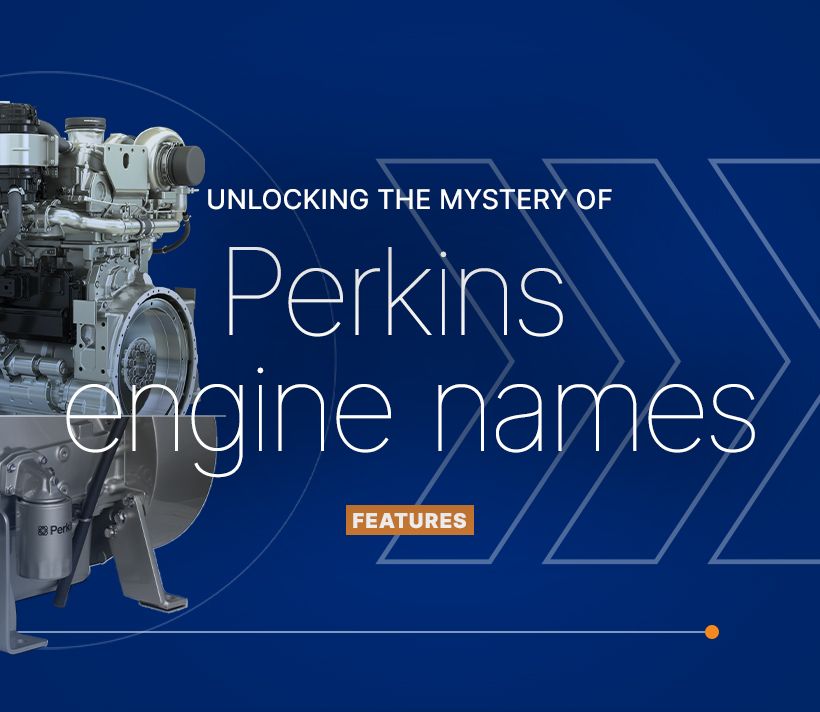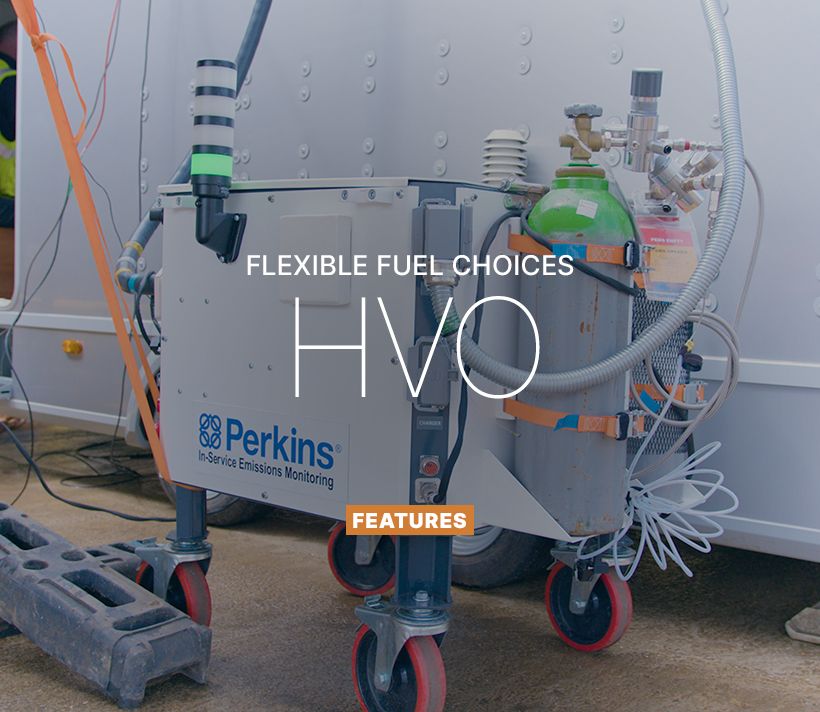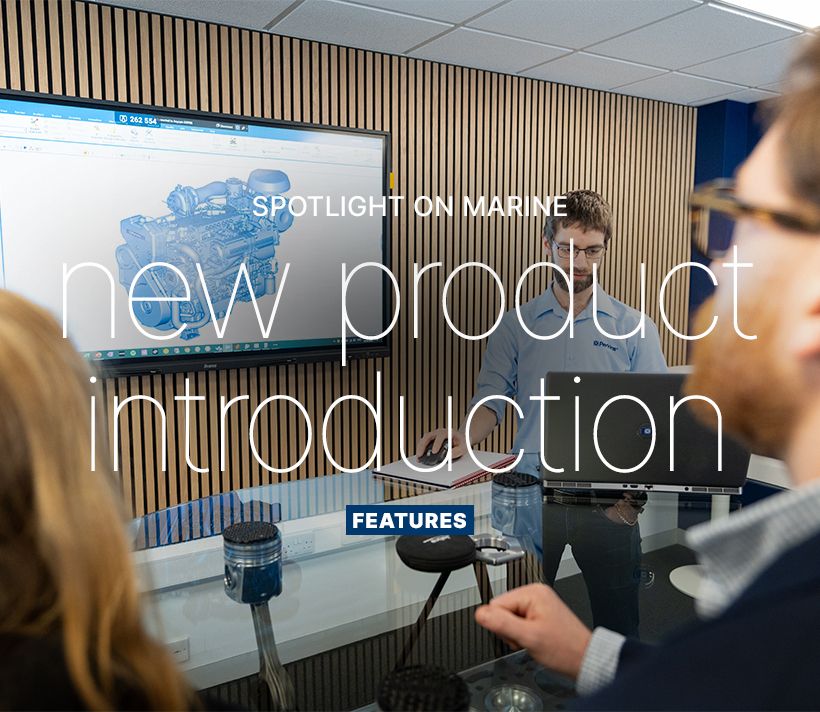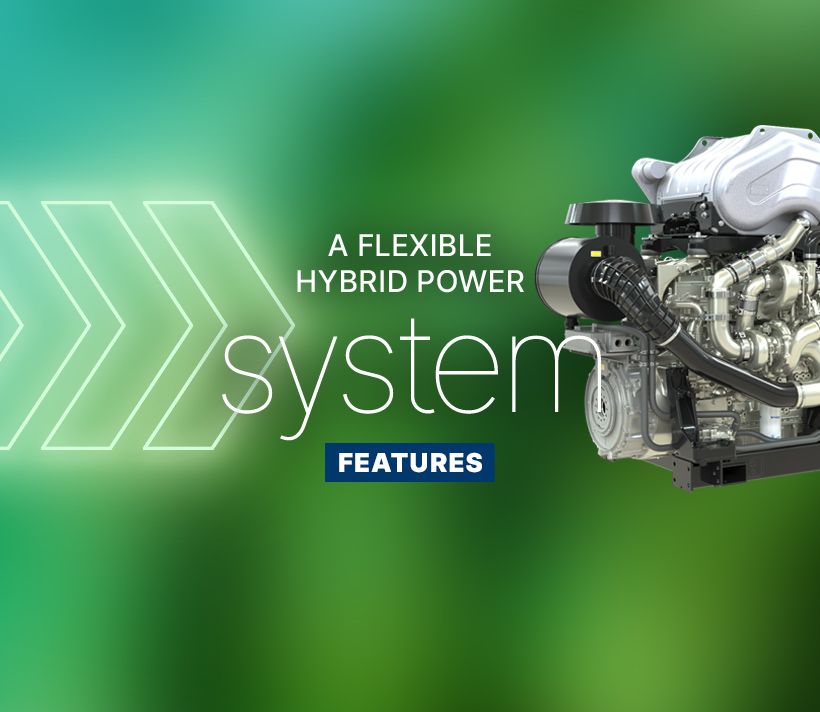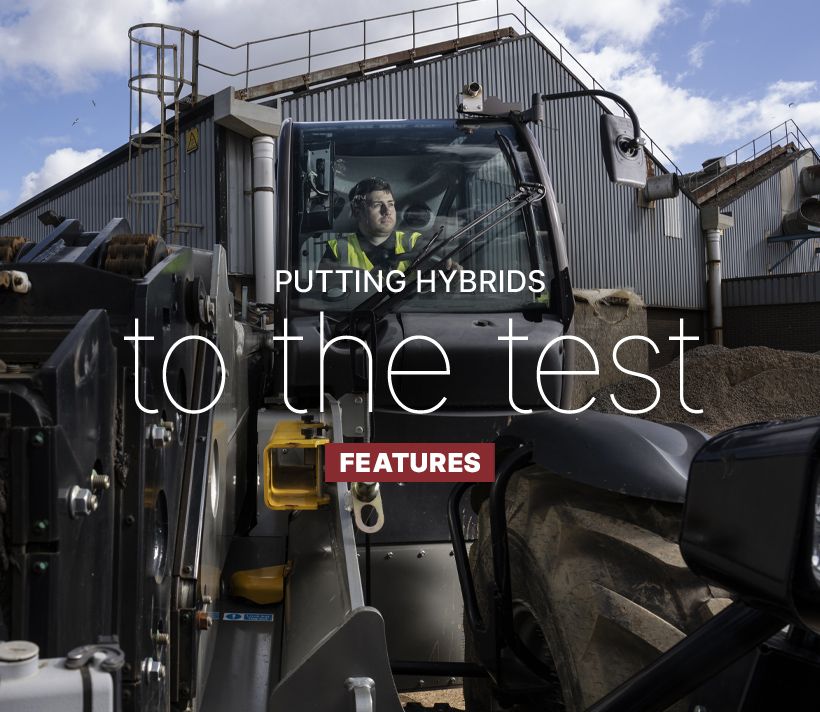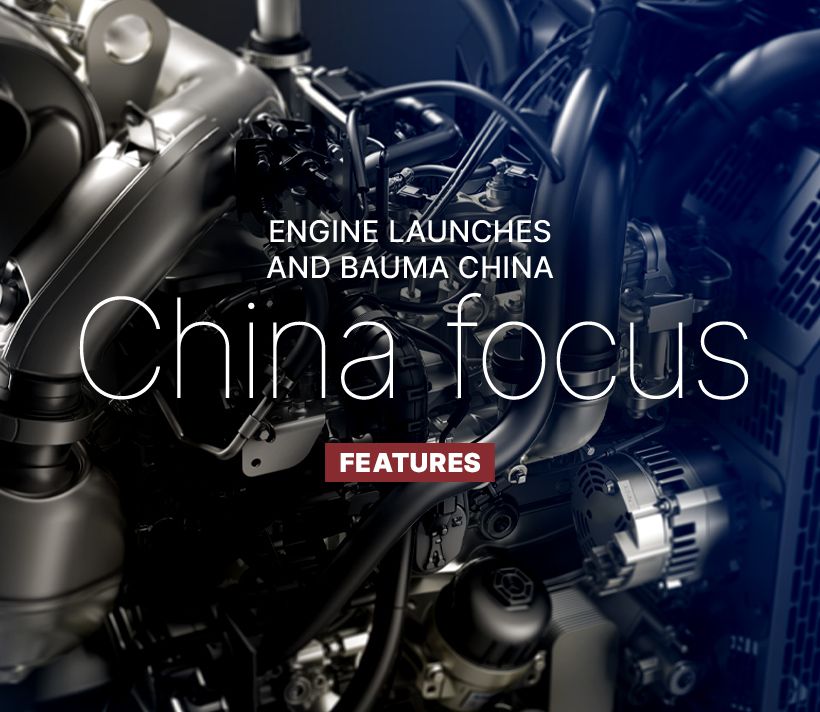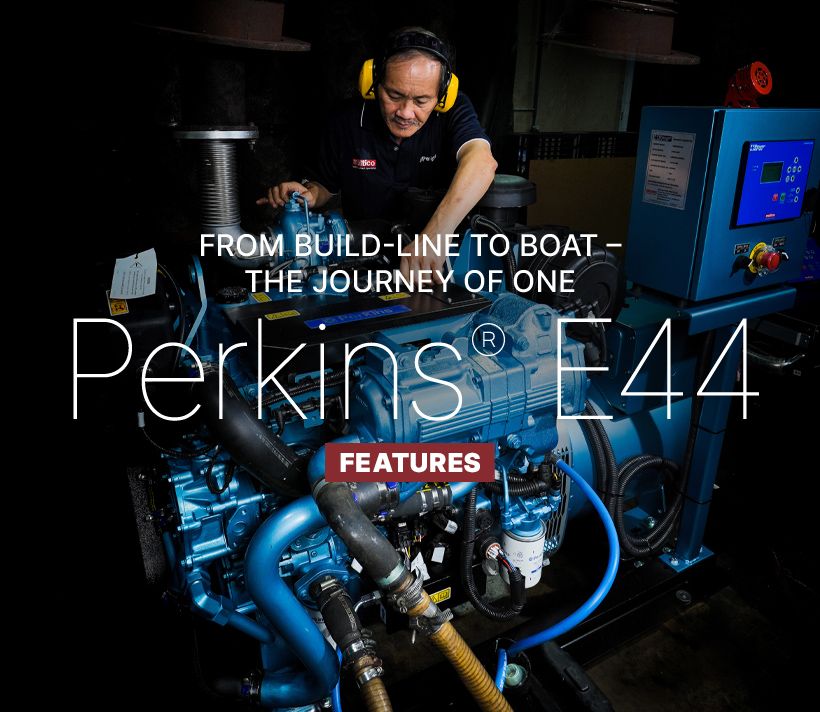The new Perkins® 2606 power generation engine offers excellent load acceptance, fuel efficiency and versatility.
Initially available for use in lesser and currently non-regulated stationary territories, this 12.9-litre engine leverages the outstanding power density and fuel efficiency of the industrial Perkins 2600 Series platform announced last year.
To date, engineers have completed more than 30,000 hours of design validation and have more than 120 patents granted or pending, across the entire 2600 Series engine platform.
Scheduled for commercial production in the second half of 2025, the Perkins® 2606A-E13TAG is the latest addition to the comprehensive Perkins electric power range and delivers a powerful 321-523 kW of prime power and 365-572 kW for standby requirements.
The 2606 engine provides flexibility by easily switching between 50 and 60 Hz and across a range of voltages, enabling one generator set to satisfy requirements in diverse regions and applications. It is ideally suited to the power demands of critical applications, data centres, power plants, industrial and real estate, among other installations. For example, the engine is also suitable for power demands in prime applications, such as those found in remote worksites.
Our engineering team designed the 2606A-E13TAG on the same foundation as its proven heavy-duty industrial counterpart. This enables this engine to power critical applications worldwide and helps ensure durable performance from the start. Key-designed core components help simplify necessary maintenance. From its single, convenient electronic connection point to oil and fuel service intervals extending up to 1,000 hours, the engine is designed to do more to help keep you up and running longer.
Small package. Big performance.
Performs in the most demanding conditions.
Helps minimise fuel and oil consumption
Performance
Cooling pack and air filter
Engine cooling and lubrication system
High pressure fuel system
Low pressure fuel system
Core engine architecture
“Generator sets still remain the core foundation for stationary and mobile power generation needs across the globe, especially in places where the electrical grid is not readily available or reliable,” said Jaz Gill, vice president of Perkins global sales marketing, service and parts.
“Diesel engines are still the driving force for these generator sets, so the Perkins 2606 engine takes advantage of our deep investment in the 13-litre engine platform to deliver a dynamic, versatile power plant that provides outstanding performance at low total ownership and operating costs.”
The engine supports quality, reliability, and easier maintenance through numerous design enhancements, including the integration of components and a reduction in the number of leak joints by more than 45 percent. Together, the upgrades result in low fluids consumption and extended oil and fuel filter service intervals as long as 1,000 hours, reducing operating costs and downtime.
The Perkins 2606A-E13TAG is built to maximise efficiency, even in harsh conditions worldwide. So, no matter where you need it the 2600 Series for electric power is ready to deliver for both prime and standby applications.
The engine is compatible with renewable liquid fuels such as 100 percent hydrotreated vegetable oils (HVO), B100 distilled Biodiesel, and up to B100 fatty acid methyl ester (FAME) standard biodiesel by working with your Perkins distributor. To preserve the performance and integrity of the engine whilst reducing the risk of downtime or failure, fuels must meet the specifications and characteristics described in official Perkins fluids guideline documents found on www.perkins.com.
Additionally, the engine’s core architecture supports the future development of spark-ignited natural-gas and hydrogen fuel capabilities.
Perkins stands behind the quality and performance of the 2600 Electric Power Series with a warranty tailored to different applications, offering peace of mind to customers. For prime or continuous applications, the engines come with a 1-year warranty, while standby applications are covered by a 2-year or 1,000-hour warranty. Furthermore, emergency standby applications benefit from a 2-year or 400-hour warranty. Additionally, Perkins provides opportunities for extended warranty through Perkins® Platinum Protection and customised service agreements tailored to the life cycle needs of the engines through Perkins® Hypercare.
When you choose the Perkins 2600 EP Series, you’re investing in a reliable, efficient, and versatile power solution that is backed by a robust support network and comprehensive warranty options. To learn more about integrating the Perkins 2600 EP Series into your generator set, visit the product page and complete a short form to quickly make contact with your local distributor.
Perkins’ collaboration with Trackunit, delivering real-time insights to customers, increasing productivity in the field.
Read moreFor industrial equipment rental, excellent technical support and parts availability is a necessity.
Read moreTo mark Agritechnica's 'Celebrate Farming Day', Powernews spoke to Andy Curtis, Customer Solutions Director at Perkins.
Read moreClever configuration options fulfil the current and future requirements of the industry.
Read moreWho keeps the lights on when the grid can’t? The power generation sector, of course. In the UK, its interests are represented by The Association of Manufacturers and suppliers of Power generating Systems (AMPS) – whose new director general, Alan Beech, came into post earlier this year.
Learn MoreHave you ever looked at the name of a Perkins engine and wondered what all those numbers and letters actually mean? If so, you’re certainly not alone. But rest assured the nomenclature is anything but random.
Read moreOne alternative fuel option we’ve researched heavily and have accommodated in our diesel engines for more than a decade is hydrotreated vegetable oil (HVO) – which must meet the EN 5940 standard – with the Perkins® 400 to 5000 Series able to use up to 100% HVO.
Read moreIn part two of our spotlight on marine we talk with Ben Lewis commercial manager, Dave Wood, application and tech support team lead and Stuart Phillipson, marine application and tech support to find out more about what’s in development for the marine range.
Read moreWhy stick to one fuel, when you can have a configurable power system?
Read moreMore than just a curiosity, they offer us different routes to future food security.
Read morePowernews caught up with Sylvia to learn more about her responsibilities, motivations, and leadership journey.
Read moreHow our Customer Solutions and Engineering teams are actively helping customers reduce fuel consumption.
Read moreMore than 280,000 visitors from across the world attended this year’s four-day long Bauma China exhibition in Shanghai.
Read moreWe follow the journey from a Perkins facility in the UK to installation on a passenger ferry in Singapore.
Read moreThe state’s farmers grow more than 400 commodity crops, 19 of them unique to the Golden State.
Read more


